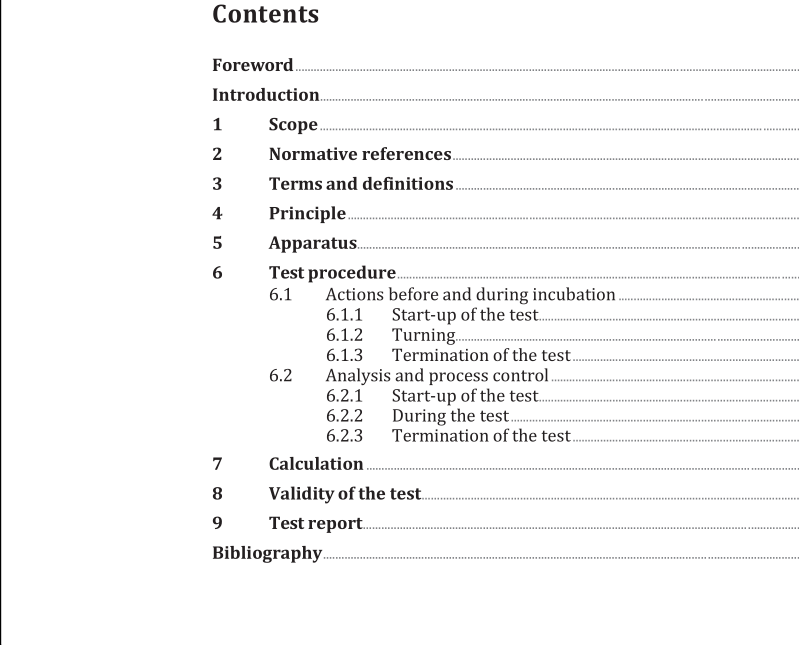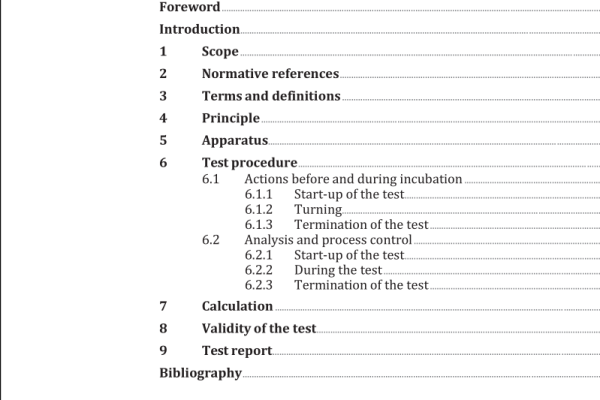ISO 16929:2021 pdf download – Plastics — Determination of the degree of disintegration of plastic materials under defined composting conditions in a pilot-scale test.
3.5 composting aerobic process designed to produce compost (3.4) 3.6 compostability property of a material to be biodegraded in a composting (3.5) process 3.7 maturity of compost assignment of the maturity of a compost (3.4) based on the measurement of the maximum temperature in a self-heating test using Dewar vessels Note 1 to entry: It is expressed in terms of the so-called “Rottegrad” (see 6.2.3.1). 3.8 total dry solids amount of solids obtained by taking a known volume of test material or compost (3.4) and drying at about 105 °C to constant mass 3.9 volatile solids amount of solids obtained by subtracting the residues of a known volume of test material or compost (3.4) after incineration at about 550 °C from the total dry solids (3.8) content of the same sample Note 1 to entry: The volatile solids content is an indication of the amount of organic matter present. 4 Principle The disintegration test is performed under defined and standardized composting conditions on a pilot- scale level. The test material is mixed with fresh biowaste in a precise concentration and introduced into a defined composting environment. A natural ubiquitous microbial population starts the composting process spontaneously and the temperature increases. The composting mass is regularly turned over and mixed. Temperature, pH-value, moisture content and gas composition are regularly monitored. They should fulfil certain requirements to ensure sufficient and appropriate microbial activity. The composting process is continued until a fully stabilized compost is obtained. This is usually the case after 12 weeks. The compost is visually observed at regular time intervals to detect any adverse effect of the test material on the composting process. At the end of the test, the maturity of compost is determined, and the mixture of compost and test material is sieved through 2 mm and 10 mm mesh sieves. The disintegration of the test material is evaluated based on the total dry solids by comparing the fraction of test material retained by the 2 mm sieve and the amount tested. The compost obtained at the end of the composting process may be used for further measurements, such as chemical analyses and ecotoxicity tests. 5 Apparatus 5.1 Composting environment. 5.1.1 General The composting environment may be either a pilot-scale composting bin or nets buried in a pilot-scale composting bin. The volume of each bin shall be high enough for natural self-heating to occur. Sufficient and even aeration shall be provided by an appropriate air supply system. To standardize conditions for the test, the composting trials can be run in bins which are placed in a climatic chamber with a constant chamber temperature or in insulated bins.
ISO 16929:2021 pdf download – Plastics — Determination of the degree of disintegration of plastic materials under defined composting conditions in a pilot-scale test






